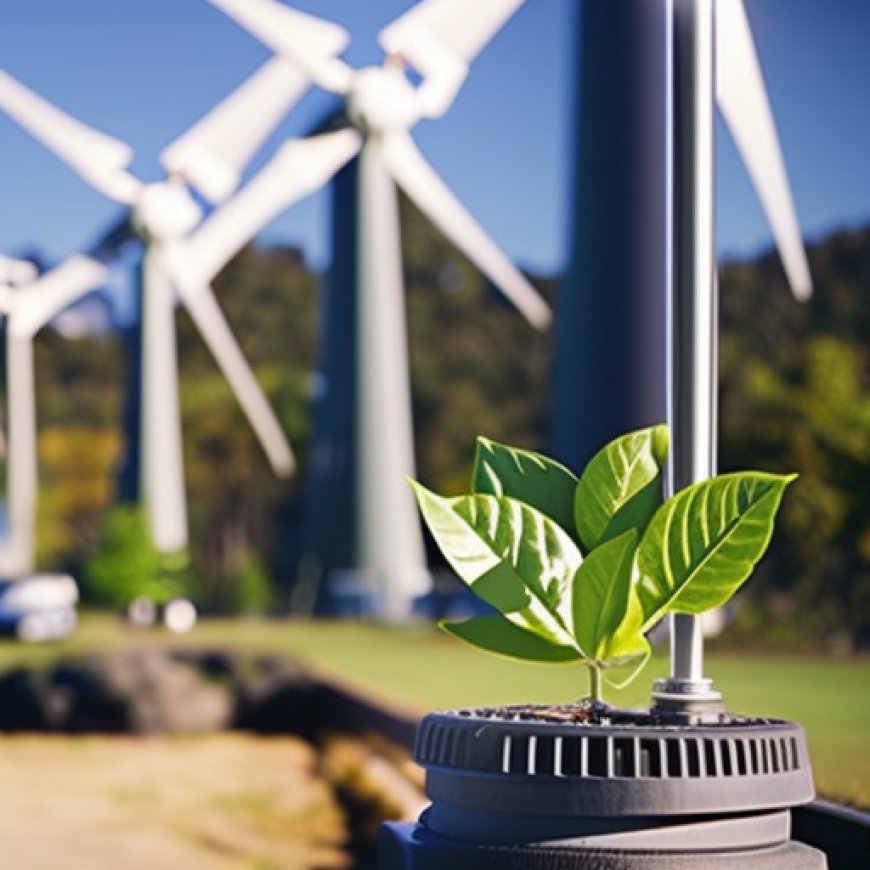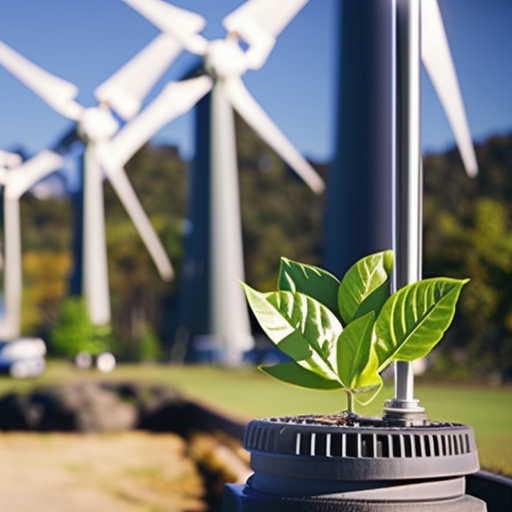Just how fast will clean energy grow in the U.S.? » Yale Climate Connections
Just how fast will clean energy grow in the U.S.? » Yale Climate ... Yale Climate Connections


Sustainable Development Goals and Clean Energy Transition in the US
The transition to clean energy is a crucial step in reducing carbon emissions and achieving the Sustainable Development Goals (SDGs). In the United States, experts have identified two key steps to achieve this transition: cleaning up the power grid and electrifying various sectors. By powering electric vehicles, heat pumps, induction stoves, and industrial processes with clean electricity, the US can significantly decarbonize its economy and fulfill its commitments under the Paris climate agreement.
Clean Energy Tax Credits and the Inflation Reduction Act
In 2022, President Biden signed the Inflation Reduction Act into law, which includes tax credits for clean electricity sources. This legislation provides financial certainty and, combined with the decreasing costs of solar and wind power and energy storage, is expected to drive a surge in clean energy deployment in the coming years. Numerous reports and studies by energy modelers and experts project that solar and wind generation in the US will nearly double by 2025 and double again by 2030, supplying approximately 50% of the country’s power by the end of the decade.
Record-Breaking Growth in Clean Energy Installations
2021 witnessed a record year for clean energy installations in the US, with significant capacity added for wind and solar power. Although supply chain issues caused a slight dip in installations in 2022, experts anticipate a rebound in 2023 due to resolved supply chain challenges and the availability of clean energy tax credits from the Inflation Reduction Act. Projections indicate continued growth in clean energy installations, with solar and wind power leading the way.
Projected Growth in Solar and Wind Generation
A recent study published in Science analyzed forecasts from various energy systems models to assess the impact of the Inflation Reduction Act. Even without this legislation, the models projected a significant increase in clean electricity generation from low-carbon sources such as nuclear, wind, hydropower, and solar. However, when factoring in the clean energy tax credits, solar and wind energy growth is expected to accelerate further. The models forecast that the US will achieve 54% low-carbon electricity by 2030, 73% by 2035, and over 80% by 2040. Solar and wind generation will nearly double from 15% of US electricity to approximately 28% by 2025, 50% by 2030, and 60% by 2035.
Challenges and Uncertainties
Despite the positive projections, several factors pose challenges to the clean energy transition. Inadequate electrical transmission infrastructure is a significant roadblock that needs to be addressed. The slow rate of expanding transmission infrastructure could hinder the connection of new clean energy sources to the grid. Efforts are underway in Congress to reform permitting processes and accelerate transmission infrastructure build-out. Net-metering policy changes in California and the potential expiration of tariffs on solar panels imported from China and Southeast Asia could also impact the deployment of clean energy.
Achieving the Sustainable Development Goals
The projected growth in solar and wind energy is a positive step towards reducing carbon emissions and achieving the SDGs. However, additional policy measures are necessary to meet the US’s climate targets. Energy models project that without further action, the progress made will only reduce climate pollution by 33% to 40% below 2005 levels by 2030 and 43% to 48% by 2035. To meet the US’s commitment to curb climate pollution by 50% below 2005 levels by 2030, additional measures and actions will be required.
SDGs, Targets, and Indicators
1. Which SDGs are addressed or connected to the issues highlighted in the article?
- SDG 7: Affordable and Clean Energy
- SDG 13: Climate Action
2. What specific targets under those SDGs can be identified based on the article’s content?
- SDG 7.2: Increase substantially the share of renewable energy in the global energy mix.
- SDG 13.2: Integrate climate change measures into national policies, strategies, and planning.
3. Are there any indicators mentioned or implied in the article that can be used to measure progress towards the identified targets?
- Percentage of electricity generated from low-carbon sources (mentioned in the article).
- Installed capacity of solar and wind power (mentioned in the article).
- Reduction in carbon pollution levels (implied in the article).
Table: SDGs, Targets, and Indicators
| SDGs | Targets | Indicators |
|---|---|---|
| SDG 7: Affordable and Clean Energy | 7.2: Increase substantially the share of renewable energy in the global energy mix. | – Percentage of electricity generated from low-carbon sources – Installed capacity of solar and wind power |
| SDG 13: Climate Action | 13.2: Integrate climate change measures into national policies, strategies, and planning. | – Reduction in carbon pollution levels |
Behold! This splendid article springs forth from the wellspring of knowledge, shaped by a wondrous proprietary AI technology that delved into a vast ocean of data, illuminating the path towards the Sustainable Development Goals. Remember that all rights are reserved by SDG Investors LLC, empowering us to champion progress together.
Source: yaleclimateconnections.org

Join us, as fellow seekers of change, on a transformative journey at https://sdgtalks.ai/welcome, where you can become a member and actively contribute to shaping a brighter future.







